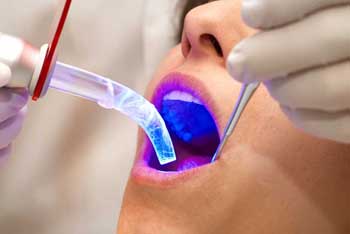Dental Continuing Education
Dental Implants and Industry Growth

The ADA notes that “89.6 percent of oral and maxillofacial surgeons, 67.9 percent of periodontists, 10 percent of prosthodontists and 8.1 percent of general practitioners said they had performed dental implant procedures.” Advances in implant technology and consumer demand point to continued growth in this field of dental medicine. The availability of continuing education for dental professionals is assisting practitioners in the transition to implant technology. In addition, dental implant companies are participating in the educational process to bring dental implant procedures to more dental clinics. Advances such as the NanoTite technology developed by BIOMET 3i demonstrate improved success rates for implant procedures. In the case of NanoTite technology, calcium phosphate is added to the surface of the implant which allows bone and implant to bond more readily.
Introduced into the USA in the early 1980’s, dental implants have become both popular and are increasingly predictable in their success rates. The success rates combined with an aging baby boom population seeking cosmetic and restorative dentistry points to the inevitable introduction of dental implant procedures into increasing percentages of dental clinics. By comparison to crown and bridge work, dental implants remain a relatively small part of the dental marketplace. However, increasing consumer demand is expected at an escalating rate. Even at current rates, total dollars spent on detal implants in the USA is in the billions of dollars annually.
Growth in the industry of dental implants is partially due to the medical benefits of implants. Patiens are able to floss and the procedure preserves adjacent teeth. Perhaps the greatest medical benefit of dental implants is the preservation and stimulation of bone growth. The health benefits combined with the aesthetic appeal of implants offsets the high out-of-pocket expense to consumers. In addition, dental implants offer dentists a significant increase in annual revenues.
Dental implants are often used an an alternative to fixed or removable prosthetic appliances. It is estimated that over 400,000 endosseous dental implants are placed every year. The success rate is attributable to the the ability of the dental implant to engage the process of osseointegration to provide a secure and stable fit. An advantage to implant technology is that no soft connective tissue disturbances result from the procedure. Many systems by several manufacturers exist and most use either a screw-in or cylindrical-press design. It is estimated that there are over one hundred dental implant companies including: BIOMET 3i, Nobel Biocare, Straumann, Zimmer, and Bicon Dental Implants.
Patients who are poor candidates for dental implants have one or more of the following conditions or issues: diabetes, alcoholism, smoking, poor oral hygiene, and post-irradiated jaws. These issues are important considerations in the preparation of patients for dental implants. For example, the International Journal of Oral & Maxillofacial Implants (1993; 8:609-615) notes that the failure rate of dental implants for non-smokers is 4.76% but is 11.28% for smokers. This suggests that an integrated program of healthcare education for patients can benefit the outcomes for patients in the dental clinic. Despite several factors such as those mentioned above that detract from successful outcomes, in 1994 the Department of Oral Rehabilitation in the Universite´ Laval in Canada noted over a 90% success rate for dental implants. More recent data from the Mayo Medical School, Division of Prosthodontics (Int J Oral Maxillofac Implants . 2005 May-Jun;20(3):406-15.) notes an average of 93% to 98% five year survival rate for dental implants.
The ADA 2004 Survey of Dental Practice, Characteristics of Dentists in Private Practice and their Patients report notes that, “in 2004, the average earnings for a general practitioner who owns his/her practice was over $185,940; the average earnings for a dental specialist was over $315,000.” General dentists are likely to seek higher incomes offered by practices incorporating dental implant procedures. This has stimulated changes to dental school curriculums to address this need and has also stimulated the growth of dental continuing education regarding dental implant procedures.

